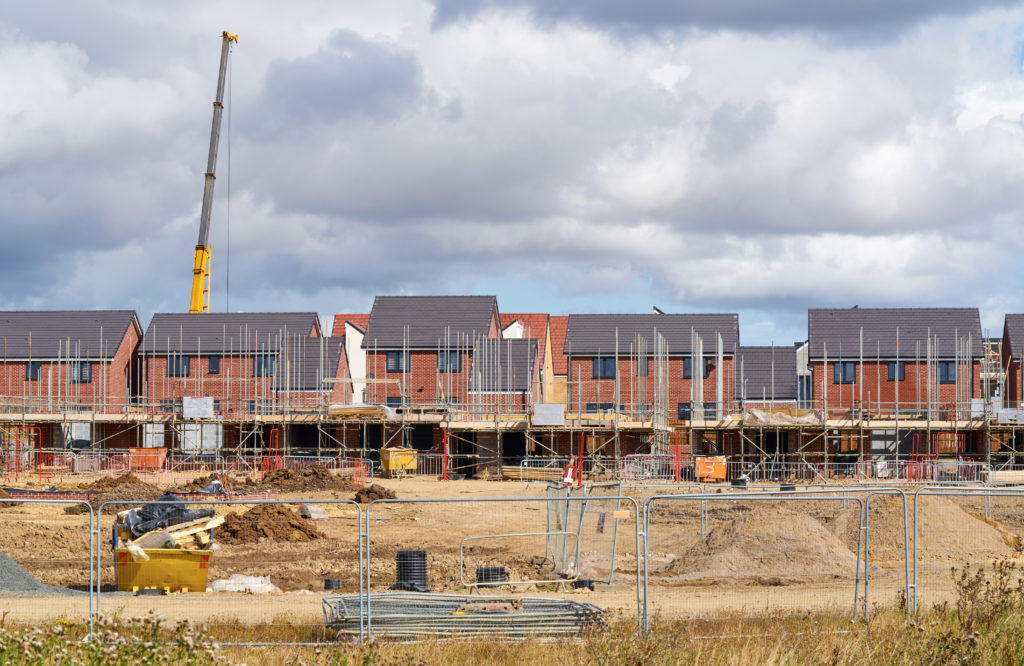
When a developer ignores restrictive covenants, they risk facing the Courts and may end up having to demolish the buildings that breach the covenants. This case is an important reminder that developers should review and consider restrictive covenants carefully before starting any development work.
The Supreme Court decision of Alexander Devine Children’s Cancer Trust v Housing Solutions Ltd [2020] UKSC 45 provides a severe warning to developers to not be “cynical”.
Background
Millgate Developments Ltd (“Developer”) obtained planning permission to carry out a housing development. It was a condition of the planning consent that the Developer should construct affordable housing. To satisfy this, the Developer built 13 properties on adjoining land which was contrary to restrictive covenants. The restrictive covenants specifically prohibited development on the adjoining land, where the use was restricted to the parking of motor vehicles. The adjoining land was adjacent to a children’s hospice which had been gifted to the hospice trust.
Restrictive covenants – the law
Under section 84 of the Law of Property Act 1925, a party with an interest in land can apply to the Upper Tribunal for a restrictive covenant to be discharged or modified. An application must rely on grounds set out in the Act. If an application is successful, the applicant is required to pay compensation to the beneficiary of the restrictive covenant.
In this case, the Developer was aware of the covenants but went ahead with the development regardless, and then made a retrospective application to the Upper Tribunal to discharge the restrictive covenant, after the Estate was completed.
Upper Tribunal (Lands Chamber) Decision
In 2016, the Upper Tribunal decided the case in favour of the Developer and allowed the properties which had been built on the Development Land to remain. The Developer was ordered to pay compensation of £150,000, but the beneficiaries of the hospice trust wished to protect their land to provide a peaceful setting for the children and their families. The beneficiaries therefore appealed to the Court of Appeal.
Court of Appeal Decision
The Developer successfully argued before the Upper Tribunal that the social housing development was in the public interest citing the planning approval as evidence supporting this argument.
However, the Court of Appeal disagreed with the weight given by the Upper Tribunal to the planning consent, and disapproved of the fact that before the development was commenced Millgate did not apply to discharge or modify the restrictive covenant or enter into an agreement with the hospice to waive the restrictive covenant.
The Court of Appeal even went so far as to say that as a matter of principle an applicant who has committed a deliberate breach of the covenant should have their application refused, at least if an application is made under the public interest limb.
The Court of Appeal also made clear that there is an equal public interest in ensuring that private property rights are respected in dealings between parties. As a consequence, the affordable homes were ordered to be demolished.
Supreme Court Decision
The case was eventually heard in the Supreme Court with judgement being handed down on 6 November 2020.
The Supreme Court refused to modify the restrictive covenant and stated that the Upper Tribunal had failed to consider two points in the exercise of its discretion, namely:-
- The Developer could have built the development on alternative land and avoided breaching the covenants. In choosing not to, the Developer had acted “cynically” and solely in its own interest; and
- The Upper Tribunal was only able to rule that modification of the covenants was in the public interest because the properties had already been constructed at the point the Upper Tribunal was approached. The hospice trust had raised objections during the construction of the units and the Supreme Court was reluctant to reward the Developer for pressing on with the construction after the objection had been raised. This again was viewed as “cynical” behaviour.
Notably, the Supreme Court refused to accept the Court of Appeal’s suggestion that there was a principle that a “cynical” breach would always outweigh the public interest ground for modifying or discharging a restrictive covenant as such a principle, without exceptions, would be “too rigid and inappropriate”. Notwithstanding that, the Supreme Court has suggested that the threshold for satisfying the public interest ground will be raised where there has been “cynical” behaviour on the part of the developer, particularly where the breach is not necessary and the covenant could be respected.
So, restrictive covenants – what lessons can be learned?
The case is an important reminder that restrictive covenants should be considered carefully prior to development work being undertaken.
The courts are likely to take a dim view of a developer who acts in a “cynical” manner and the decision is a further reminder of the importance of good developer conduct, and the importance of engaging with known beneficiaries prior to development, particularly if the beneficiaries have raised objections.
For more information on restrictive covenants please see our other articles where we have written about how to alter and remove a restrictive covenant and what is considered an “annoyance covenant”. If you have any questions, please get in touch below.
